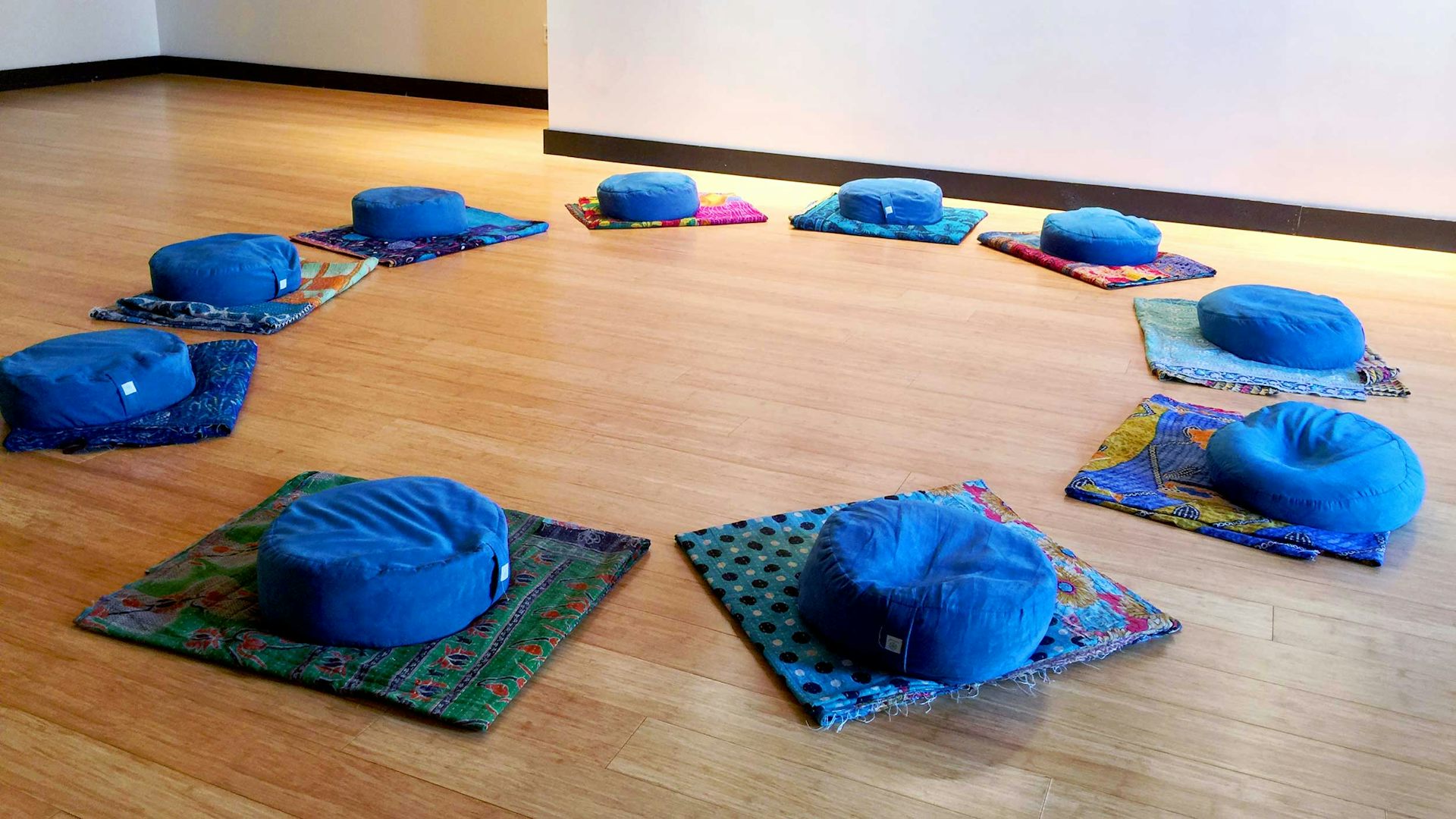I assisted Carter’s work encouraging democracy – and saw how his experience, persistence and enginee
A former staffer with The Carter Center saw how Jimmy Carter’s efforts to bring democracy to Latin America improved conditions, prevented bloodshed and saved lives.
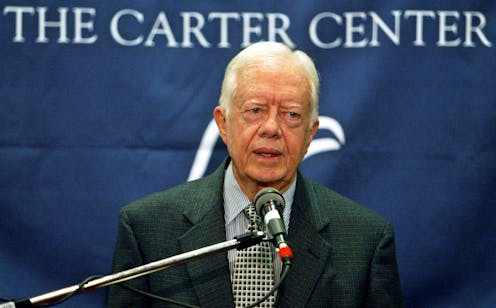
When former President Jimmy Carter and his wife Rosalynn Carter founded the nonprofit Carter Center in 1982, one of their goals was to help Latin American countries – many of which were emerging from decades of military dictatorship – transition to democracies.
Already a hero to many in the region for promoting human rights and giving up U.S. control of the Panama Canal during his presidency, Carter pioneered the center’s international election monitoring and conflict mediation with the work he did in Latin America.
I was on staff of The Carter Center from 1987 to 2015, first as a senior adviser and then as director of its Americas Program. In those roles, I worked closely with him, often accompanying the former president on trips to Latin America, where he tried to strengthen democracies and achieve peace.
I saw a man with great determination and self-discipline, driven by his faith and confidence that he could make a difference. He was always willing to take risks to tackle seemingly intractable problems.
The Jimmy Carter I remember was results-oriented rather than process-driven. He brought an engineer’s mind to every problem and was ready with possible solutions. He could be stubborn. But he was always willing to make principled decisions, even if they cost him politically.
For example, when – as president in 1977 – he signed the Panama Canal Treaties to turn over control of the canal to Panama by 1999, he was heavily criticized by many members of Congress. But with the treaties, Carter ended an arrangement that, from 1903, had allowed the U.S. to control the canal and was viewed as colonialism by many Latin Americans.
Since taking over the canal, Panama has expanded its capacity.
Democracy first
Carter always believed that negotiation was more fruitful than force. As president, he leaned into this philosophy with the Israeli-Egyptian peace accords and did the same thing to help Haiti reestablish democracy as leader of The Carter Center.
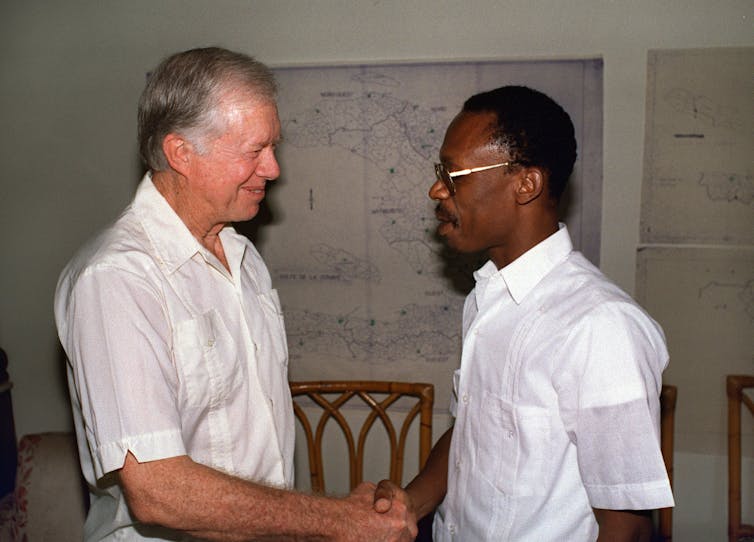
In 1994, the U.S. was set to invade Haiti on a United Nations-approved mission to reinstall the country’s first democratically elected president, Jean-Bertrand Aristide. Carter had monitored voting there in 1990, when Haitians elected Aristide. The Haitian leader was ousted in a military coup soon after, though.
When Carter informed President Bill Clinton that Haitian military general Raoul Cedras had asked for Carter’s help in mediating the crisis and avoiding a U.S. invasion, Clinton allowed for a last-ditch diplomatic effort to seek a solution.
Carter led a team, including former Chairman of the Joint Chiefs of Staff Colin Powell, to Haiti on a very short timeline to negotiate a peaceful end to the situation. With the U.S. forces already en route, the men managed to persuade the generals to accept amnesty and exile to avoid a potentially deadly U.S. invasion.
The Carter art of mediation
In my view, Carter’s genius as a mediator is his belief that there is some innate goodness in every person, no matter the harm they may perpetrate. He strove to develop a connection with even the most detestable dictators because he knew their decisions could change the future of a society. Once he had a relationship with those leaders, he presented them with the hard choices they needed to make. And he always kept his compass. He focused on the well-being of the people in the countries he was helping, not his personal successes or failures.
His approach opened him to criticism that he cozied up to dictators. But, to me, he just exercised realism and persistence.
The Sandinista revolutionary government of Nicaragua, led by Daniel Ortega, came to power during the Carter presidency, when a broad coalition overthrew the dictator Anastasio Somoza.
The Reagan administration responded to Ortega’s Sandinista government by imposing an economic embargo and supporting a counterinsurgency from rebel forces known as the Contras. President Ortega needed help to end that conflict and believed that he could gain international legitimacy and pressure the U.S. to change its policy if he held internationally monitored elections. So, Ortega invited The Carter Center, the U.N. and the Organization of American States to mount an unprecedented election-monitoring mission that ended up terminating the Sandinista revolution.JL: What is a “signature’s checking board” (in caption below)? maybe “members of a team checking signatures”?
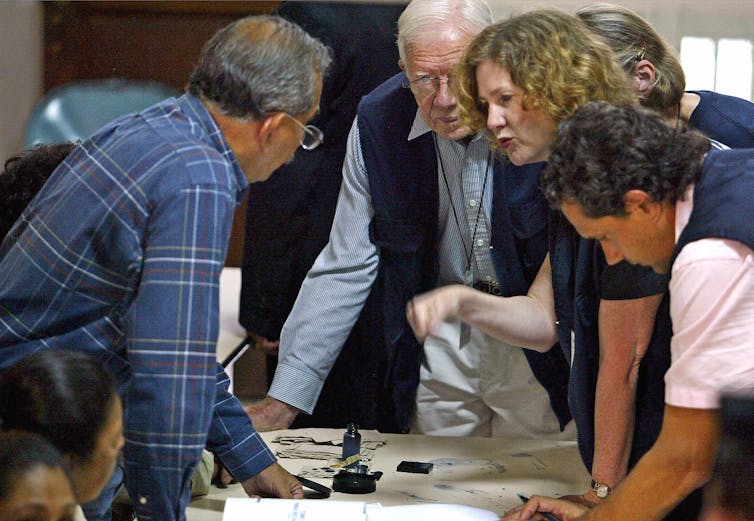
I was The Carter Center’s field representative in Managua at the time. The former president had developed his relationship with Ortega over the course of five trips to Nicaragua during the election campaign in 1989 to 1990, mediating disputes along the way. But election night was the most important moment. The initial vote count reports mysteriously stopped, and around midnight Carter went to see Ortega, along with the U.N. and OAS representatives. Carter told him that our data indicated the Sandinista-backed candidate had lost and that Ortega should acknowledge the loss and take credit for the democratic elections and everything the Sandinista revolution had accomplished.
Ortega acceded and the next day we accompanied him as he visited President-elect Violeta Chamorro’s house to congratulate her on her victory.
He was persistent
But Carter didn’t stop there, knowing the transition would be rocky. He gathered the two sides together in my little house in Managua and, sitting on rocking chairs on the patio, he negotiated a three-point agreement to frame the transition’s most difficult points – confiscated property and land reform, the integrity of the security forces and demobilization of the Contras.
Another time Carter’s persistence paid off was in Venezuela. That country’s democracy became unmoored with plummeting oil prices and hyperinflation in the 1990s, and The Carter Center was invited to monitor the 1998 elections, which populist outsider Hugo Chávez won.
After a failed military coup attempted to oust him in 2002, a shaken Chávez asked Carter to mediate between him and his political opposition. We partnered with the U.N. and OAS to form a tripartite mediating group – the OAS secretary general, trusted by the opposition; Carter, trusted by Chávez; and the U.N. as a neutral party providing background support.
Although the opposition was initially skeptical of Carter, given that he was invited by Chávez, it came to value Carter’s entree with Chávez and held high expectations he could hold Chávez to any commitments.
When an eventual agreement led to a recall referendum petition process, Carter forcefully pushed a stalling Chávez and his team to acknowledge that the opposition had gathered sufficient signatures to hold the referendum to decide whether to end Chávez’s term early.
But when the vote finally happened in August 2004, Chávez had managed to turn the tide in his favor in the opinion polls by spending on social programs. He won the vote decisively. The opposition alleged the vote count was fraudulent, while the OAS and The Carter Center audits of the count did not detect fraud. I received many messages from irate Venezuelans blaming Carter and me for ignoring fraud and allowing Chávez to continue in power in Venezuela.
I learned then what a thick skin a public figure must have to withstand the fury of severely disappointed people.
I have always admired Carter for the countless controversial decisions he made over the years. And I believe he will be remembered for his vision of a free and peaceful world and his willingness to tackle seemingly insurmountable problems with high risk of failure.
His interventions at key moments helped save lives – and encouraged Latin American democracy, at least for a time. And his center’s ongoing, lower-profile programs that promote citizens’ rights to information, election integrity, mental and public health and media freedom have made life better for people in many countries in the hemisphere.
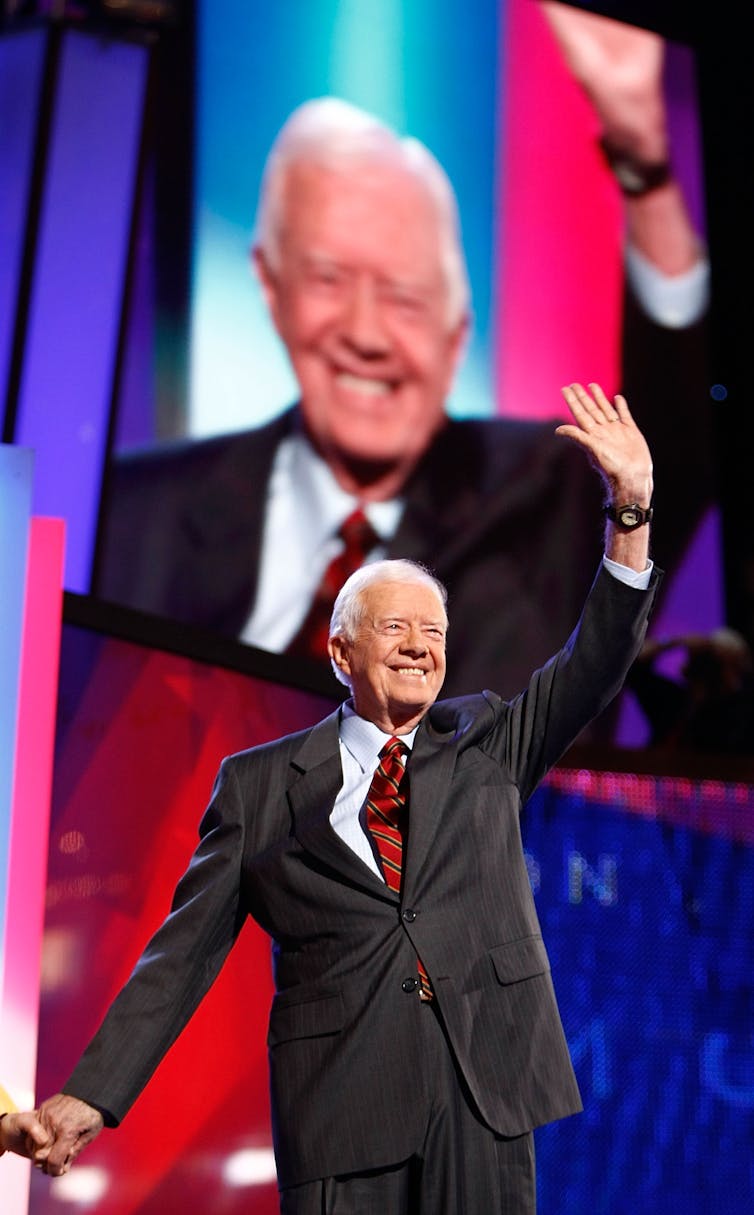
Jennifer Lynn McCoy is professor of political science at Georgia State University and a nonresident scholar at the Carnegie Endowment for International Peace. She was Associate Director and Senior Associate from 1987-1998 and Director of the Carter Center's Americas Program from 1998-2015.
Read These Next
LA fires showed how much neighborliness matters for wildfire safety – schools can do much more to te
Managing fire risk is about more than regulations and rules. It’s also about caring for neighbors…
What loving-kindness meditation is and how to practice it in the new year
The practice of this meditation often involves quietly reciting to oneself several phrases that evoke…
As DOJ begins to release Epstein files, his many victims deserve more attention than the powerful me
Powerful men connected to Jeffrey Epstein are named, dissected and speculated about. The survivors,…



